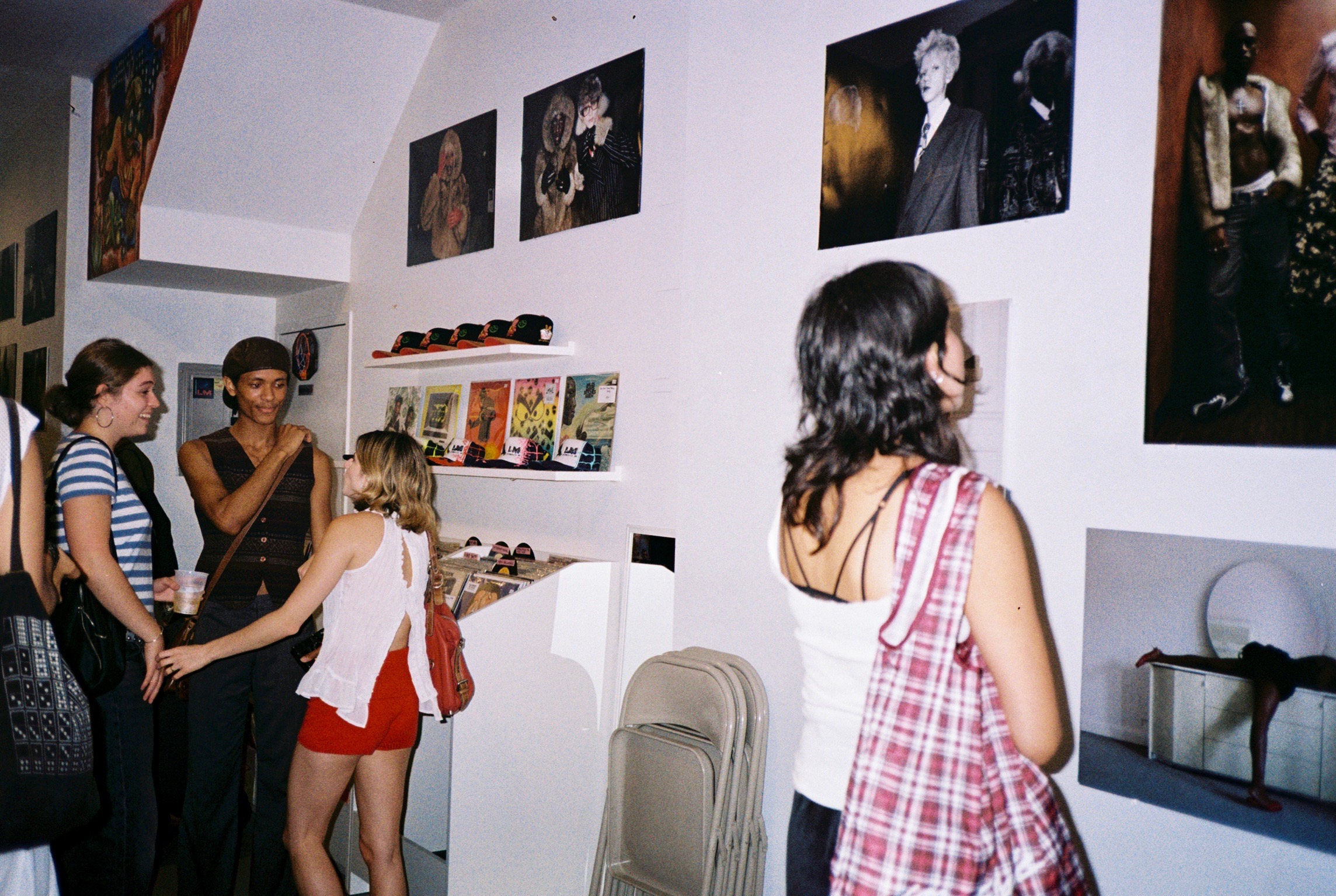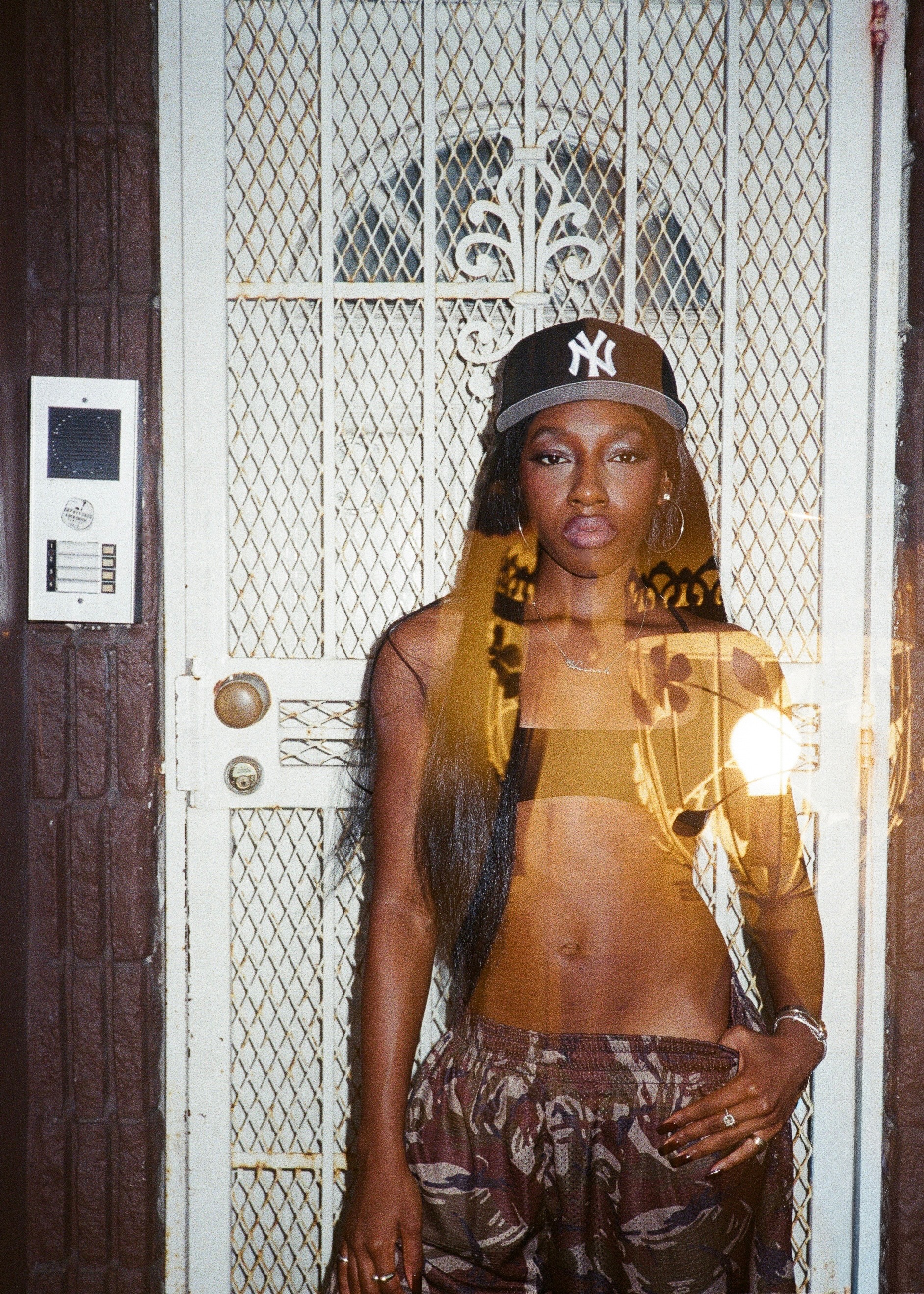F L A U N T


Young creatives, friends, and family crowd into an intimate record shop to watch Brooklyn-born photographer and creative director Hannah-Mia Hinds make her directorial debut. Hinds is screening her multi-media short film, Miss Mia, at Loudmouth in Bed-Stuy, Brooklyn. Familiar faces smoke on the block, Stella Artois is poured into plastic cups, friends sift through the five-dollar record bin, and curious strangers marvel at the photos on the wall. As a long-time friend, and even longer admirer, I envy those who get to witness the work with fresh eyes.


Hinds first gained recognition for her photography, most notably for sneaking backstage to photograph Skepta's MAINS SS25 at London Fashion Week. While living in London she began a process of self-meditation, examining her influences and creative process. Despite her success in fashion, she felt compelled to push for a deeper understanding of her artistry, and Miss Mia was born. “I had consumed and copied so many other people in my life that I had trouble recognizing if my goals and desires were authentic or if they were based solely on what I’d seen others accomplish,” she explains. “I realized that as an artist I could build entire concepts around what and who I desired to become to see if they’d fit.”
Miss Mia stars three young women surrounded by photos, rolling papers, perfume, and beer cans, plastered with the character, Miss Mia. What could be mistaken as an alter ego, Hinds clarifies in her post-screening talk back, “I don't like the word alter ego… If I’m doing the work why give it to another persona?” she questions. “I always wanted to be a pop star, and I figured instead of trying and posting on Instagram… I could just create a project in which I was the center of attention. I was the thing I could focus on. I was the thing I could pull apart and analyze, and that’s what Miss Mia is,” she explains.

Hinds was struck by the overwhelming digital landscape for artists, where work exists largely on the ‘digital ether’ and consumed on others’ terms. Miss Mia acts as a reclamation of agency, giving Hinds the power to decide how her work, and personhood, is consumed. The physical media aspect was crucial for Hinds, "I wanted to commodify myself so bad, I wanted to do it on purpose,” she explains. “Within creating all these products for the character Miss Mia, I was able to choose how I wanted to be seen and commodified.”
The film marks another milestone for Hinds in an increasingly difficult artistic landscape. Hinds leverages the often underestimated power of community to create projects and spaces that champion independent creativity. Miss Mia, and its physical manifestations, establish a reality where Hinds has the artistic freedom to define her work as she sees fit, claiming her artistic integrity before it's consumed and manipulated by someone else. “I am curating a new world for myself,” she explains. “I learned that having a voice is not just a sentence, period. It’s consistent and it’s tiring and you have to have that strength.”